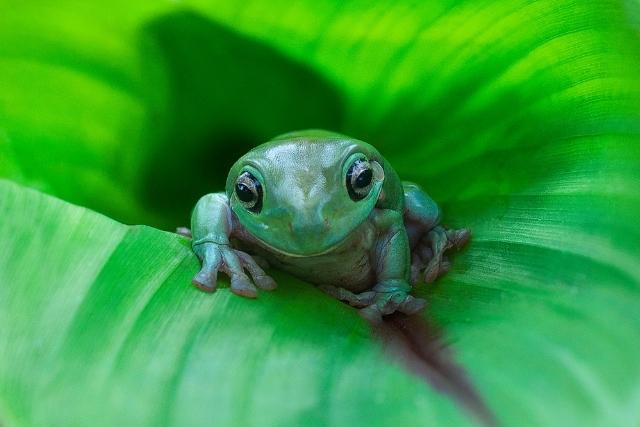In the last few years, interest in psychedelics has skyrocketed. That’s because psychiatric researchers are finding that psychedelics are a highly effective tool for a wide range of mental illnesses.
However, psychedelic use has a long history in psychiatry. That means now we’re in the midst of a psychedelic resurgence.
If you’d like to know all about psychedelics in psychiatry, then continue reading below.
The History of Psychedelics in Psychiatry
It turns out that psychedelic therapy isn’t a new concept. Although this may be the first time many are hearing about it—psychedelic research is nearly 100 years old.
The first experiments were on mescaline and peyote in the 1920s and 1930s. The main goal was to try and learn something about psychosis and schizophrenia.
However, what they found was that these psychedelics could have therapeutic properties.
Then, the next significant phase began in the 1940s with the discovery of LSD. In 1947, a psychiatric experiment was conducted that looked at the effects of LSD on healthy people and those with schizophrenia.
In the end, they discovered that low doses of LSD had properties that could help deal with repressed emotions.
Then in the 1950s and 1960s, LSD research hit a high watermark. Hundreds of studies were made which looked into a wide range of mental illnesses.
One of the highlights was LSD’s ability to treat addiction and alcoholism. LSD was also used to treat depression, anxiety, and neuroses.
During the late 1950s, psilocybin-containing magic mushrooms made their way to the West. A few Harvard researchers became interested in psilocybin and started using it in psychiatric experiments.
What they found was that psilocybin could cause a spiritual experience. That experience could help people overcome difficult memories and repressed emotions.
Unfortunately, psychedelics in psychiatry ended because of the war on drugs. By the late 1960s, nearly all psychedelic experiments were put on hold.
The Rebirth of Psychedelic Research
The rebirth of psychedelic research came back in the 1990s—decades after the abrupt stop. A few experiments involving psilocybin were made in the following years.
Then, there was a big breakthrough in 2006 that showed how promising psilocybin could be. From then on, interest in psychedelics and favorable public opinion began growing.
Now, the idea of psychedelic therapy has entered the mainstream.
What Kind of Psychedelics are Used in Psychedelic Therapy?
Right now, researchers are focused on a handful of psychedelics. The most commonly used psychedelics are—ayahuasca, psilocybin, LSD, and MDMA.
Of course, there are many more being investigated, but these are the hallucinogens that show the most use and promise.
Ayahuasca
Ayahuasca is a psychedelic brew that originated in Central and South America. It’s made by brewing the stalks of the ayahuasca vine (Banisteriopsis caapi) and chacruna leaf (Psychotria viridis).
The active hallucinogen in this mixture is known as DMT. Once ingested, the psychedelic trip can last up to 8 hours.
Ayahuasca has many benefits and is being used to treat depression, anxiety, and PTSD.
Psilocybin
Psilocybin is the main psychedelic compound found in magic mushrooms. Magic mushrooms have been used worldwide for thousands of years.
However, researchers usually use a purified version of psilocybin instead of the mushroom.
Psilocybin is being used to treat anxiety, depression, substance abuse, OCD, and demoralization.
LSD
In 1938, Albert Hofmann synthesized LSD in a lab in Switzerland. A few years later, he accidentally took some and discovered its properties.
Since then, LSD has been used to treat substance abuse, anxiety, and depression.
MDMA
MDMA, also known as ecstasy, was first produced in 1912. However, the effects of MDMA weren’t investigated until the 1970s.
Although MDMA isn’t a psychedelic, it does produce psychedelic effects. MDMA is now being used to treat PTSD.
How Are Psychedelics Used in Psychiatry?
Although there is no standard practice, each psychedelic is used in a similar way. Usually, psychedelic therapy starts with regular talk therapy.
The patient is introduced to the professionals, which helps them become comfortable. Then comes the day for a low or moderate dose of a psychedelic.
Usually, this is provided in a comfortable and relaxed room with the professionals watching over the patient. The patients can speak with the professionals and discuss emotions, experiences, and anything on their minds.
For many psychedelics, two or more sessions are necessary. Typically, there’s one to two weeks in between sessions.
After the sessions are complete, patients continue with talk therapy. The therapists also help the patients process and find meaning in the psychedelic experience.
This helps patients integrate their experience and build on top of it. This integration is perhaps the crucial part of psychedelic therapy.
Is Psychedelic Therapy Effective?
According to recent research, psychedelic therapy is exceptionally effective. There are dozens of papers and clinical trials, but here are a few samples.
● Psilocybin has been shown to decrease anxiety and depression by a vast margin.
● For alcohol abuse, LSD has shown to be effective after just a single dose.
● MDMA has long-term efficiency at reducing PTSD symptoms.
The Future of Psychedelics in Psychiatry
At the moment, it looks like psychedelics will become an essential tool in psychiatry. Likely, its use will become more widespread once harmful drug laws change.
Performing these experiments or getting involved in one is extremely difficult. Although we’ve come a long way, psychedelics are still banned substances.
There’s no easy way to get into psychedelic therapy, which doesn’t look like it will change soon.
However, as public opinion grows, the laws may change quickly. For example, Oregon became the first state to legalize psilocybin.
In 2023, Oregonians will be able to take psilocybin in supervised settings. For now, Oregon is the only state that will allow psilocybin, but many more could follow.
On top of that, MDMA is on its way to becoming an FDA-approved therapy for treating PTSD. Phase 3 trials are already underway, and the treatment could be approved by 2023.
It doesn’t look like the interest in psychedelics is going to go away anytime soon. This time, it seems like psychedelics are here to stay.





No Comments